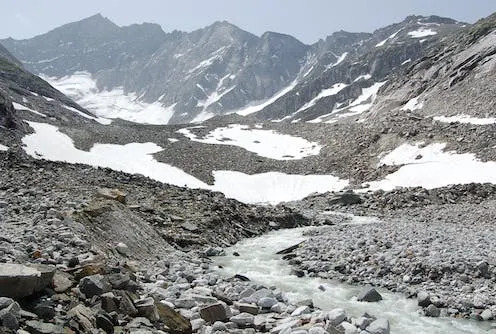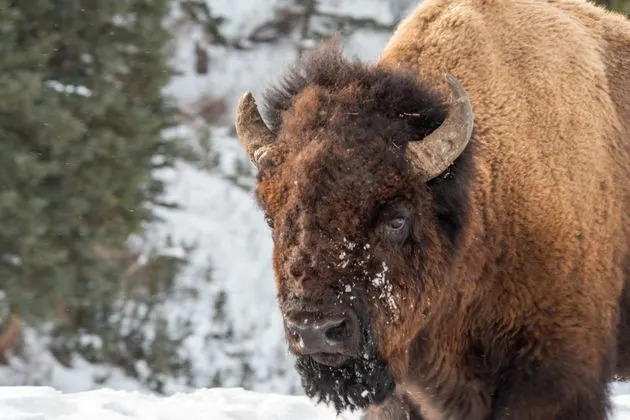Story by Tara Subramaniam • CNN
May 23.2023
If the current pace of global warming goes unchecked, it will push billions of people outside the “climate niche,” the temperatures where humans can flourish, and expose them to dangerously hot conditions, according to a new study published Monday.
The study, published in the journal Nature Sustainability, evaluated the impact on humans if the world continues on its projected trajectory and warms 2.7 degrees Celsius by the end of the century, compared to pre-industrial temperatures.
Factoring in both the expected global warming and population growth, the study found that by 2030 around two billion people will be outside the climate niche, facing average temperatures of 29 degrees Celsius (84 degrees Fahrenheit) or higher, with around 3.7 billion living outside the niche by 2090.
Timothy Lenton, one of the study’s two lead authors, said that one third of the global population could find themselves living in climate conditions that don’t support “human flourishing.”
“That’s a profound reshaping of the habitability of the surface of the planet and it could lead potentially to large scale reorganization of where people live,” Lenton, director of the Global Systems Institute at the University of Exeter, said in a video shared by the institute.
According to the report, the niche consists of places where the annual average temperature spans from 13 degrees Celsius (55 degrees Fahrenheit) to around 27 degrees Celsius (81 degrees Celsius). Outside this window, conditions tend to be too hot, too cold or too dry.
The study determined that while less than 1% of the global population is currently exposed to dangerous heat, with average temperatures of 29 degrees Celsius or higher, climate change has already put more than 600 million people outside the niche.
“Most of these people lived near the cooler 13 degree Celsius peak of the niche and are now in the ‘middle ground’ between the two peaks. While not dangerously hot, these conditions tend to be much drier and have not historically supported dense human populations,” said study co-author Chi Xu, a professor at Nanjing University.
If the Earth warms 2.7 degrees Celsius, India, Nigeria, Indonesia, the Philippines and Pakistan would be the top five countries with the most population exposed to dangerous heat levels, the study found.
The entire population of some countries, such as Burkina Faso and Mali, as well as small islands already at risk from rising sea levels, would face unprecedented high temperatures.
In the worst case scenarios, if the Earth warms up by 3.6 or even 4.4 degrees Celsius by the end of the century, half of the world’s population would be outside the climate niche, constituting what the report calls “an existential risk.”

The last eight years have been the warmest on record.
If the current pace of global warming goes unchecked, it will push billions of people outside the “climate niche,” the temperatures where humans can flourish, and expose them to dangerously hot conditions, according to a new study published Monday.
The study, published in the journal Nature Sustainability, evaluated the impact on humans if the world continues on its projected trajectory and warms 2.7 degrees Celsius by the end of the century, compared to pre-industrial temperatures.
Factoring in both the expected global warming and population growth, the study found that by 2030 around two billion people will be outside the climate niche, facing average temperatures of 29 degrees Celsius (84 degrees Fahrenheit) or higher, with around 3.7 billion living outside the niche by 2090.
Timothy Lenton, one of the study’s two lead authors, said that one third of the global population could find themselves living in climate conditions that don’t support “human flourishing.”
“That’s a profound reshaping of the habitability of the surface of the planet and it could lead potentially to large scale reorganization of where people live,” Lenton, director of the Global Systems Institute at the University of Exeter, said in a video shared by the institute.
According to the report, the niche consists of places where the annual average temperature spans from 13 degrees Celsius (55 degrees Fahrenheit) to around 27 degrees Celsius (81 degrees Celsius). Outside this window, conditions tend to be too hot, too cold or too dry.
The study determined that while less than 1% of the global population is currently exposed to dangerous heat, with average temperatures of 29 degrees Celsius or higher, climate change has already put more than 600 million people outside the niche.
“Most of these people lived near the cooler 13 degree Celsius peak of the niche and are now in the ‘middle ground’ between the two peaks. While not dangerously hot, these conditions tend to be much drier and have not historically supported dense human populations,” said study co-author Chi Xu, a professor at Nanjing University.
If the Earth warms 2.7 degrees Celsius, India, Nigeria, Indonesia, the Philippines and Pakistan would be the top five countries with the most population exposed to dangerous heat levels, the study found.
The entire population of some countries, such as Burkina Faso and Mali, as well as small islands already at risk from rising sea levels, would face unprecedented high temperatures.
In the worst case scenarios, if the Earth warms up by 3.6 or even 4.4 degrees Celsius by the end of the century, half of the world’s population would be outside the climate niche, constituting what the report calls “an existential risk.”

The last eight years have been the warmest on record.
- Samsul Said/Bloomberg/Getty Images
According to the report, living outside the niche could lead to increased mortality rates, as exposure to temperatures above 40 degrees Celsius could be lethal, especially if humidity is so high the body can no longer cool itself to a temperature that can maintain normal functions.
Extreme heat is also predicted to decrease crop yields, and increase conflict and the spread of disease.
Scientists have long warned that warming beyond 1.5 degrees Celsius would result in catastrophic and potentially irreversible changes. As the areas within the climate niche shrink as global temperatures rise, a larger swath of the population will also be more frequently exposed to extreme weather events including droughts, storms, wildfires and heatwaves.
Experts say there is still time to slow the pace of global warming by moving away from burning oil, coal and gas and toward clean energy, but the window is closing.
Every fraction of a degree will make a difference, Lenton said. “For every 0.1 degrees Celsius of warming above present levels, about 140 million more people will be exposed to dangerous heat.”
Earlier this month, the World Meteorological Organization announced that within the next five years, there is a 66% chance that the planet’s temperature will be more than 1.5 degrees Celsius warmer than pre-industrial levels for at least one year.
“We’ve left it so late to tackle climate change properly that we’re now at a point that to achieve the rate of change we need, means something like a five times speeding up of the reduction in greenhouse gas emissions or the decarbonization of the global economy,” Lenton said.
CNN.com
According to the report, living outside the niche could lead to increased mortality rates, as exposure to temperatures above 40 degrees Celsius could be lethal, especially if humidity is so high the body can no longer cool itself to a temperature that can maintain normal functions.
Extreme heat is also predicted to decrease crop yields, and increase conflict and the spread of disease.
Scientists have long warned that warming beyond 1.5 degrees Celsius would result in catastrophic and potentially irreversible changes. As the areas within the climate niche shrink as global temperatures rise, a larger swath of the population will also be more frequently exposed to extreme weather events including droughts, storms, wildfires and heatwaves.
Experts say there is still time to slow the pace of global warming by moving away from burning oil, coal and gas and toward clean energy, but the window is closing.
Every fraction of a degree will make a difference, Lenton said. “For every 0.1 degrees Celsius of warming above present levels, about 140 million more people will be exposed to dangerous heat.”
Earlier this month, the World Meteorological Organization announced that within the next five years, there is a 66% chance that the planet’s temperature will be more than 1.5 degrees Celsius warmer than pre-industrial levels for at least one year.
“We’ve left it so late to tackle climate change properly that we’re now at a point that to achieve the rate of change we need, means something like a five times speeding up of the reduction in greenhouse gas emissions or the decarbonization of the global economy,” Lenton said.
CNN.com














